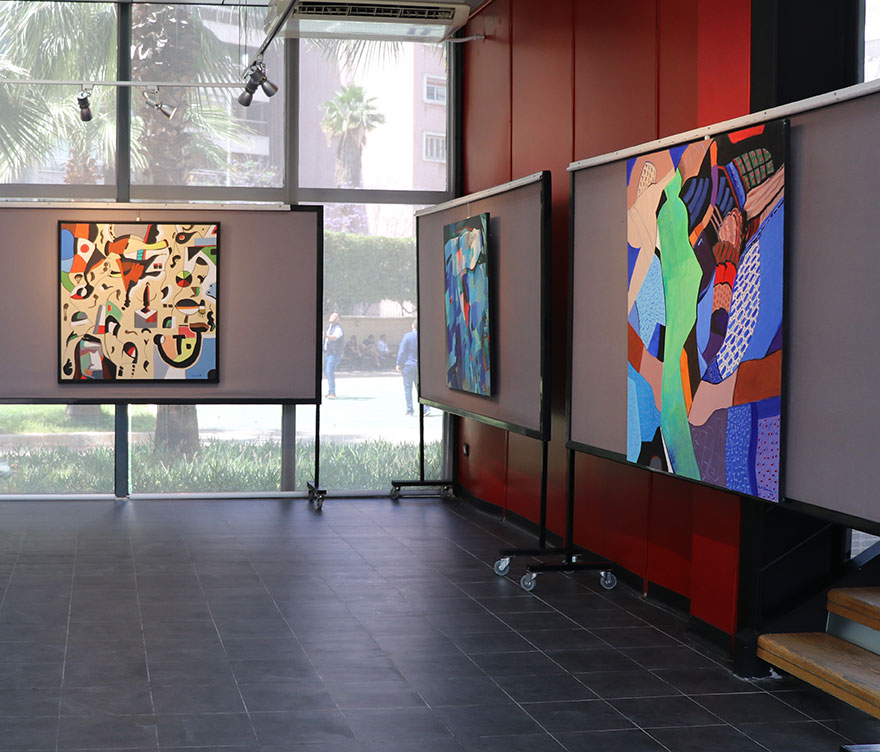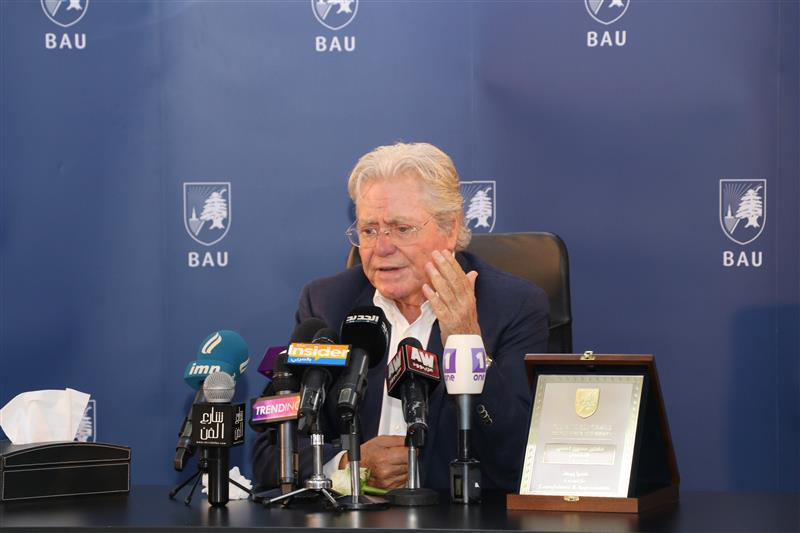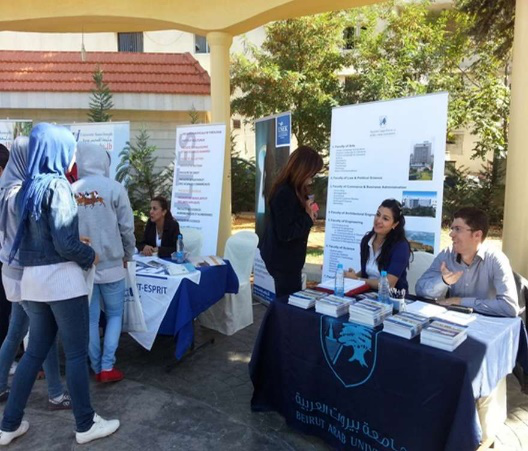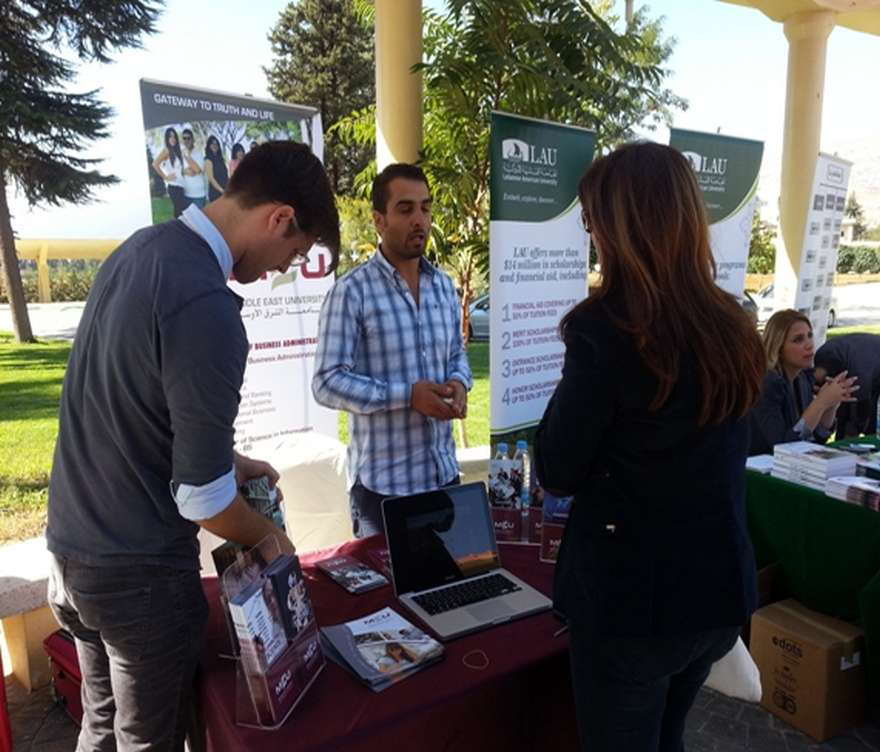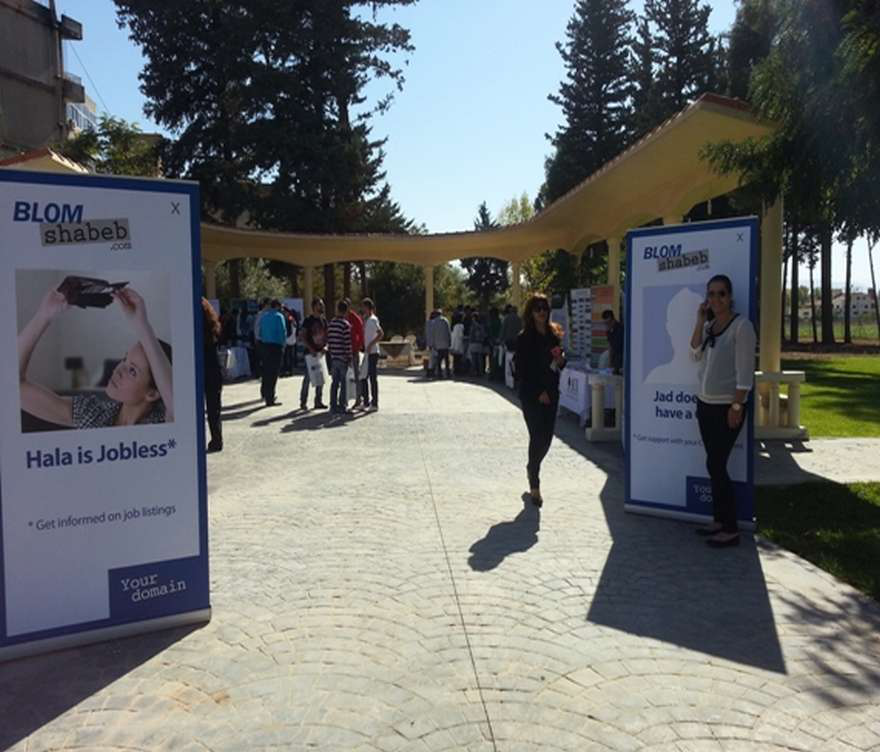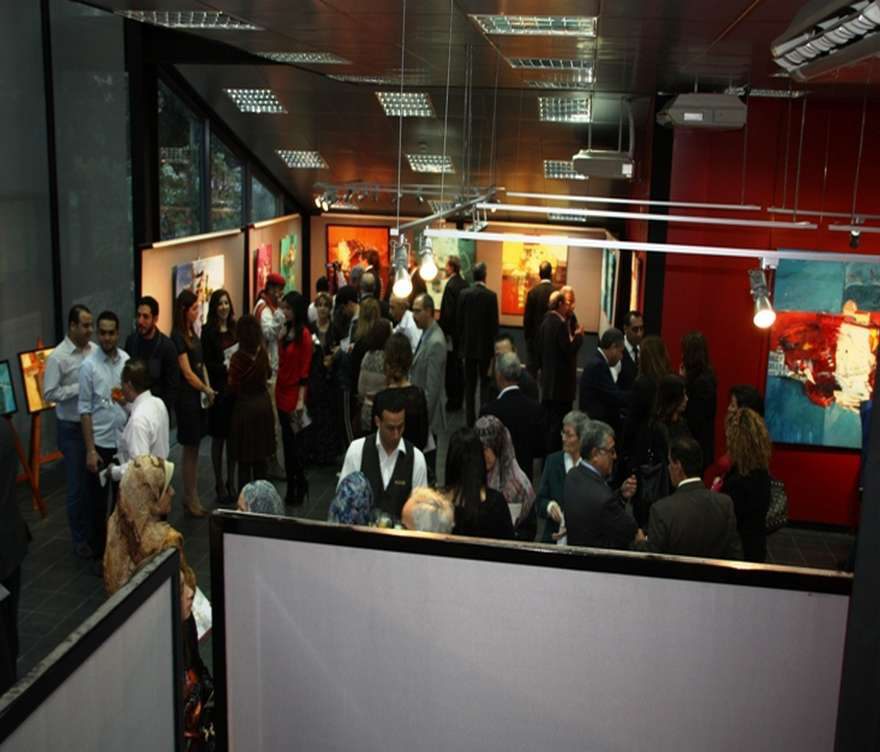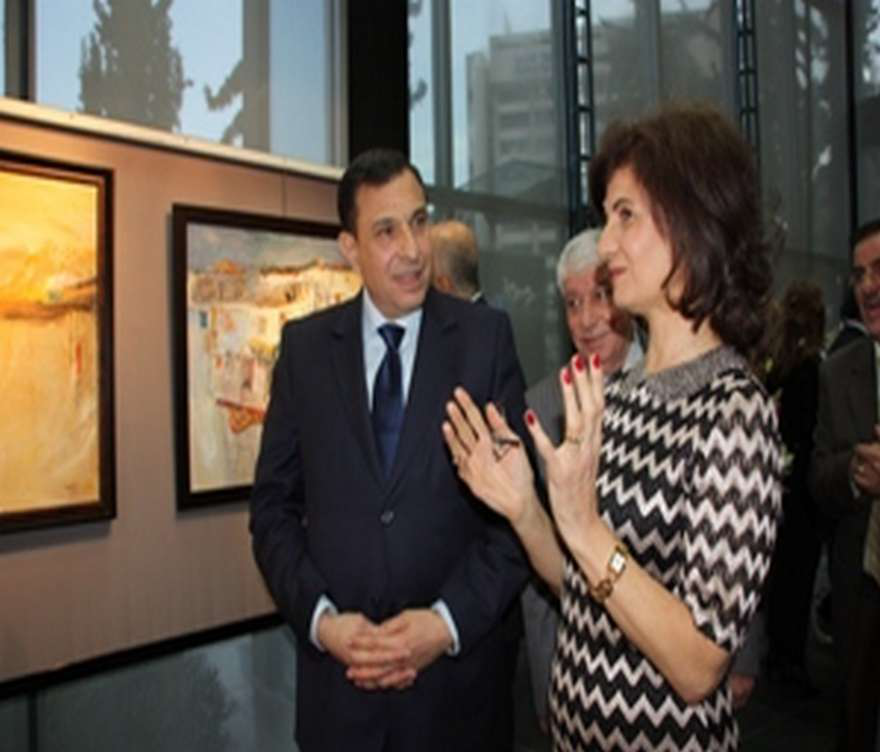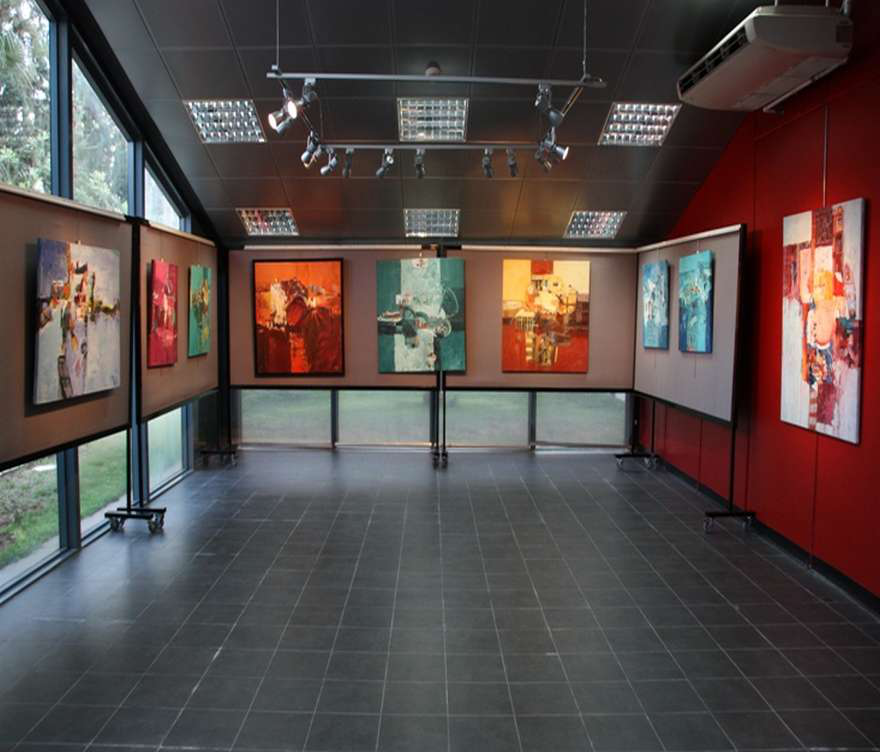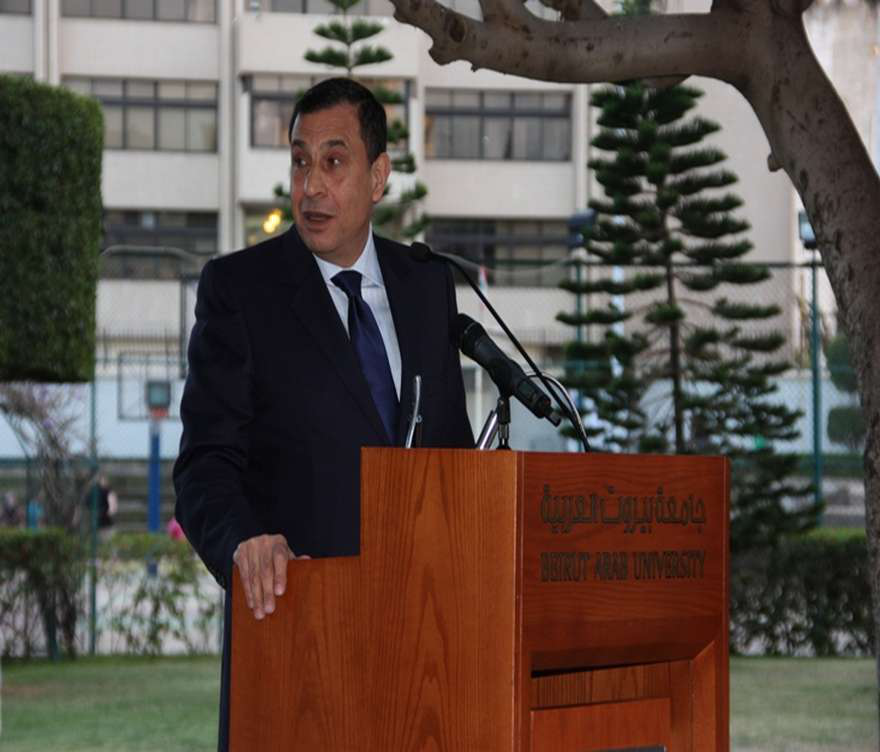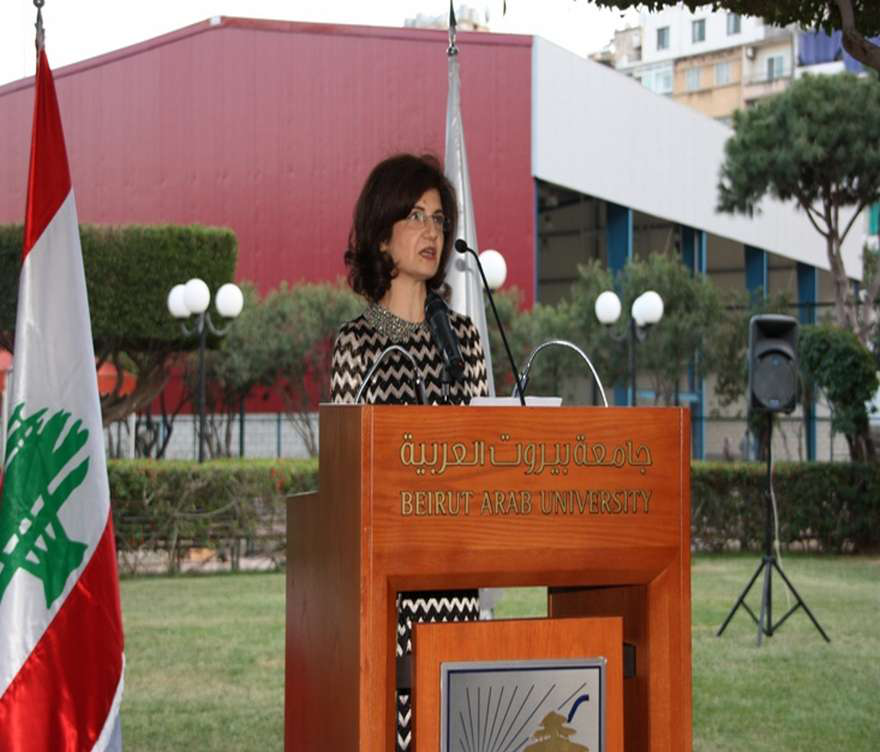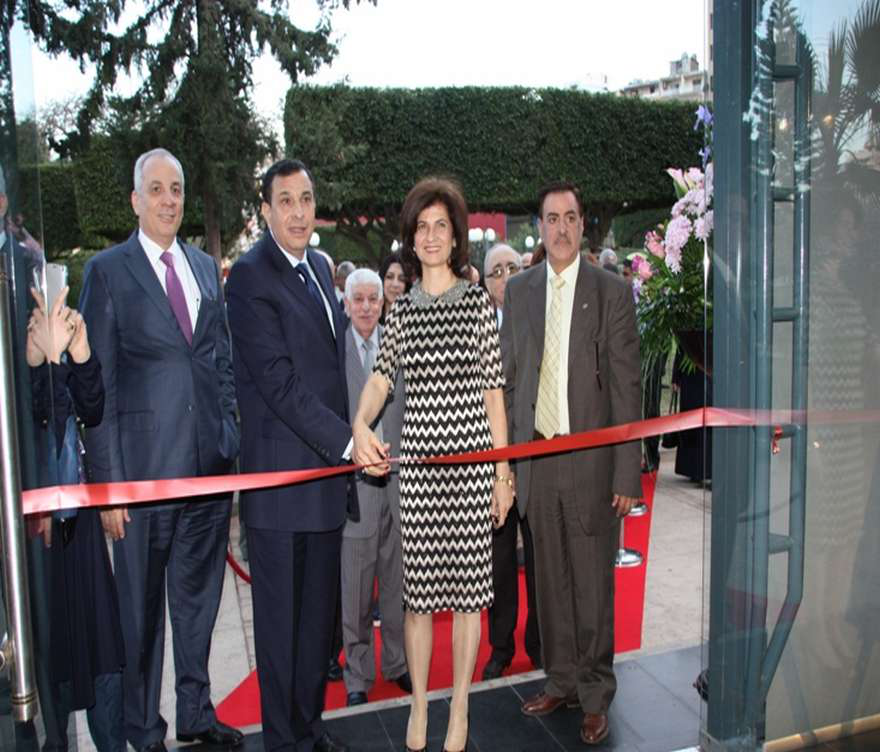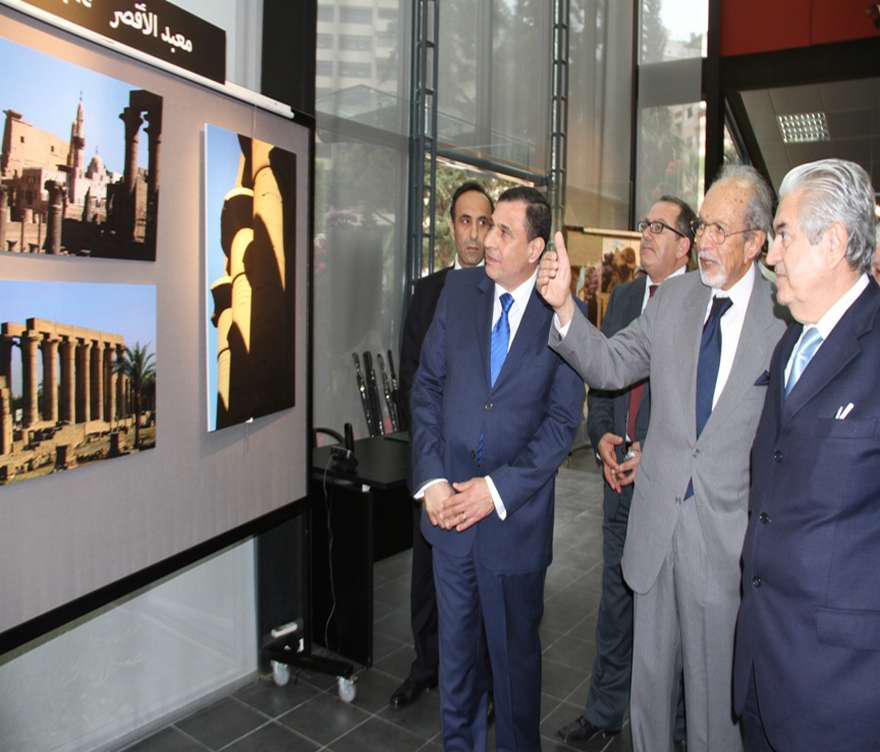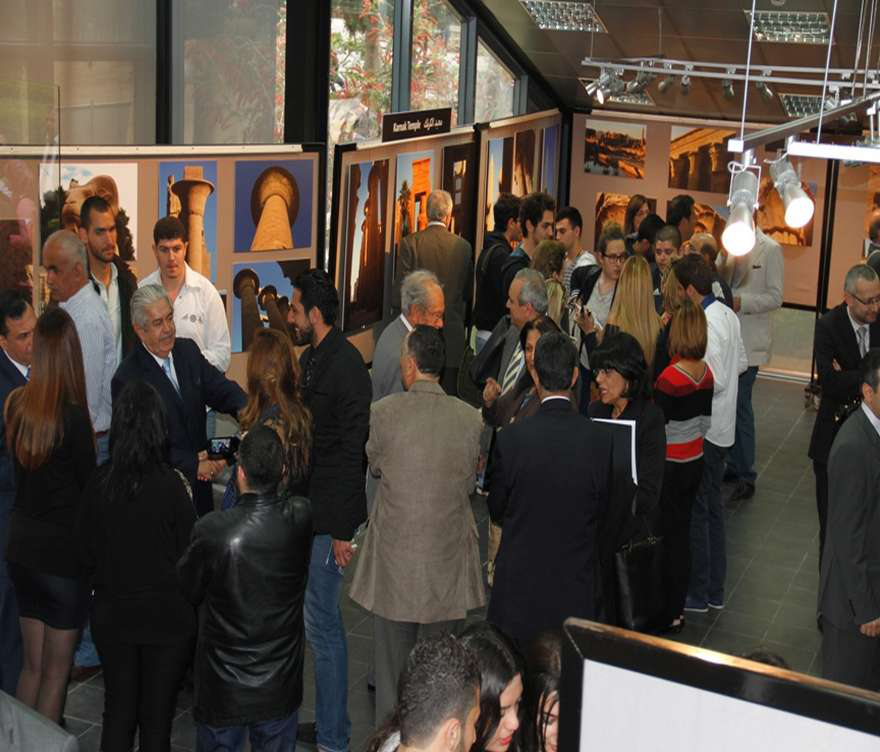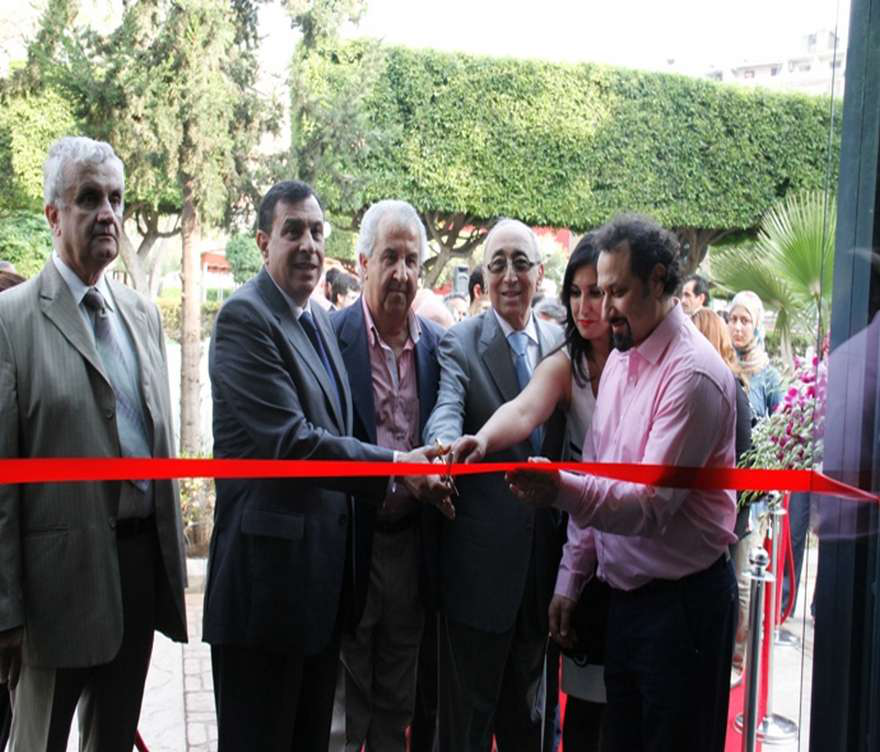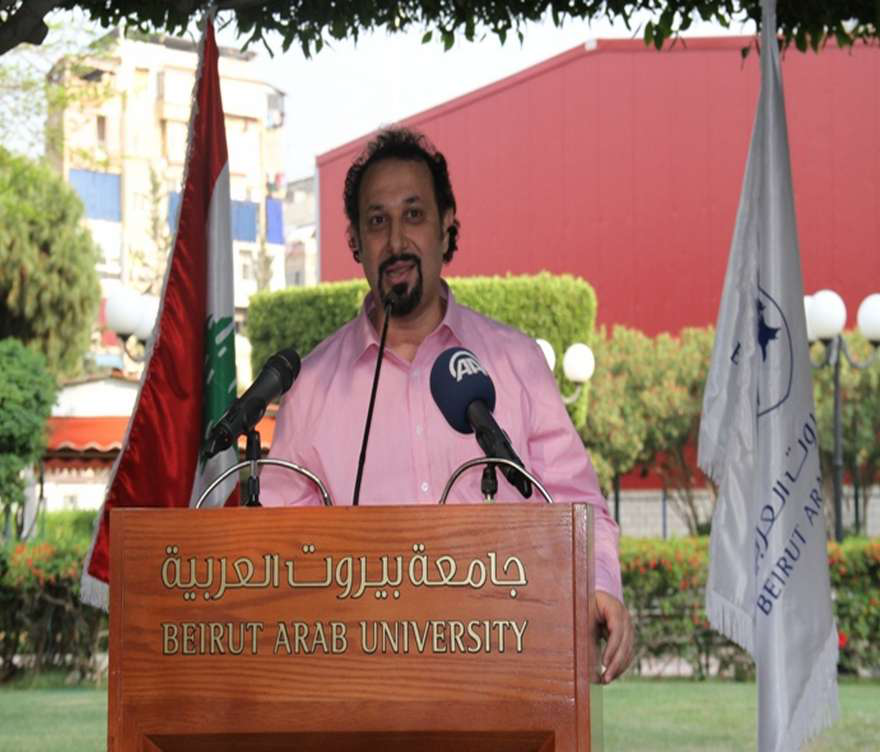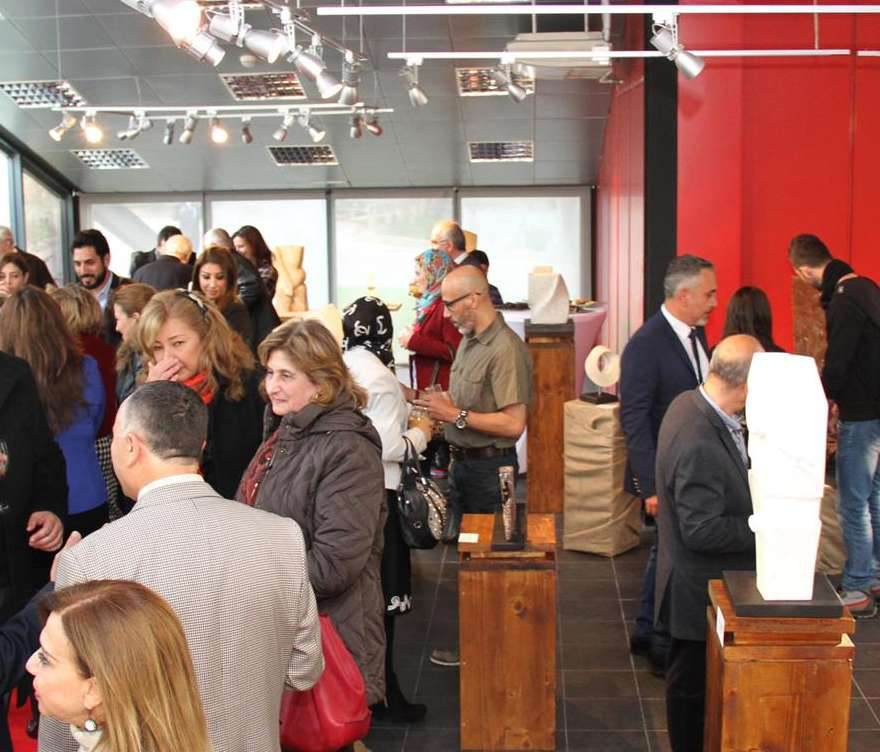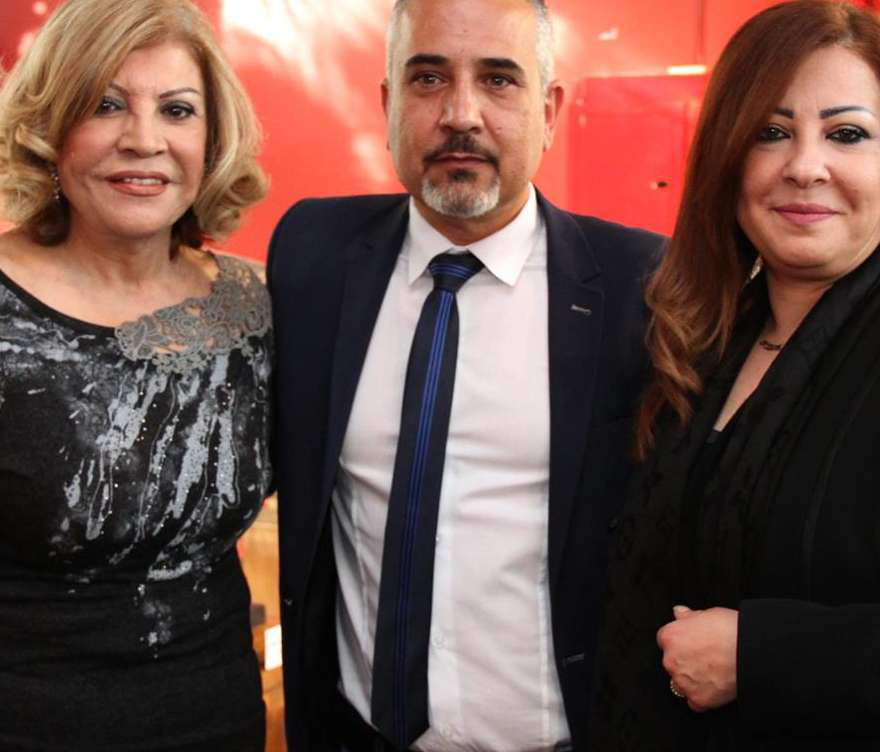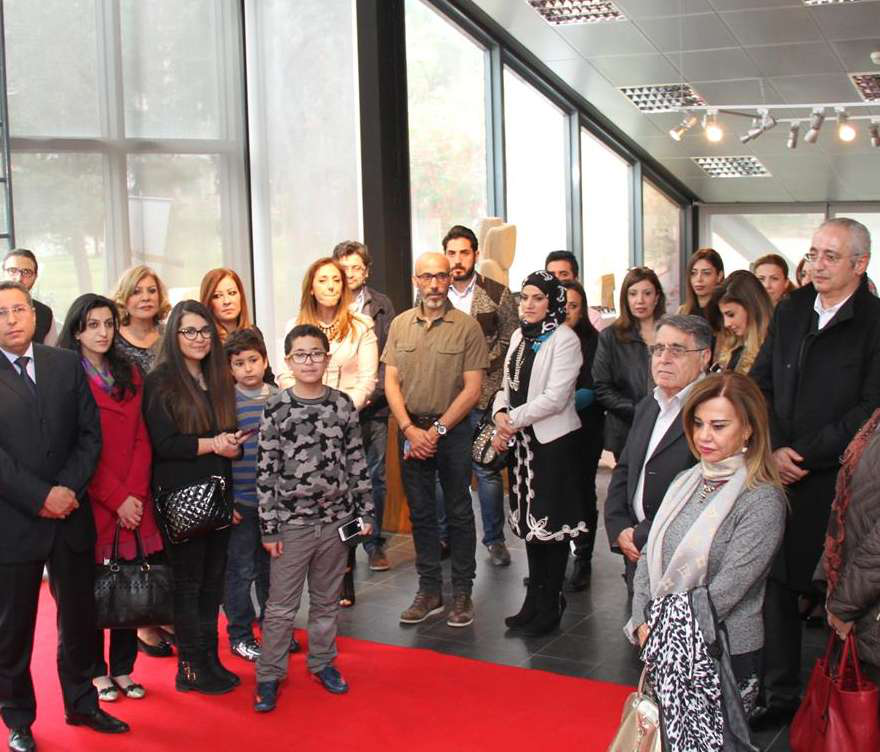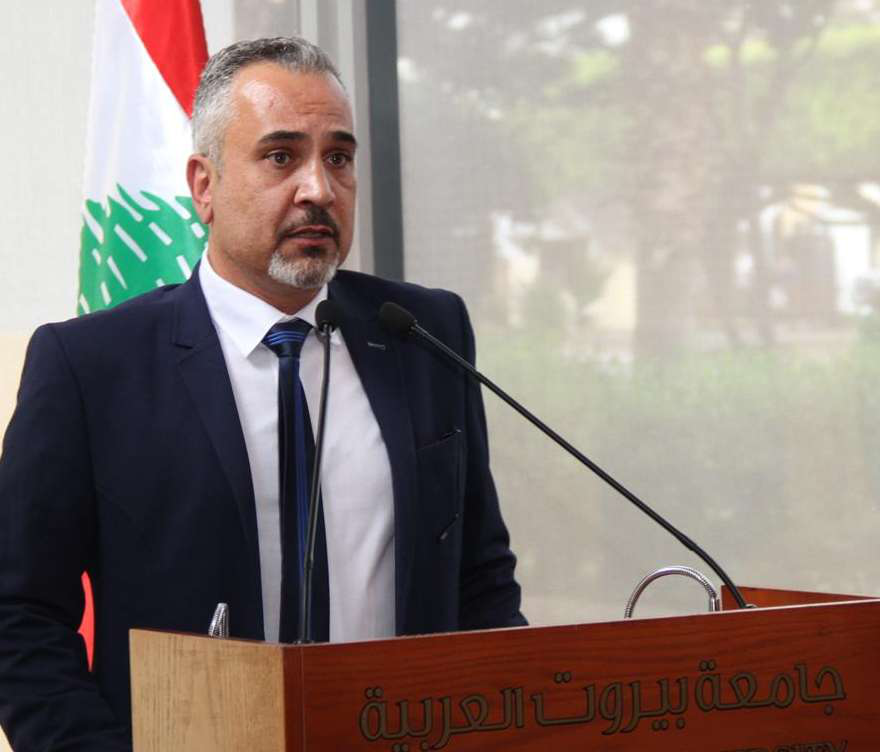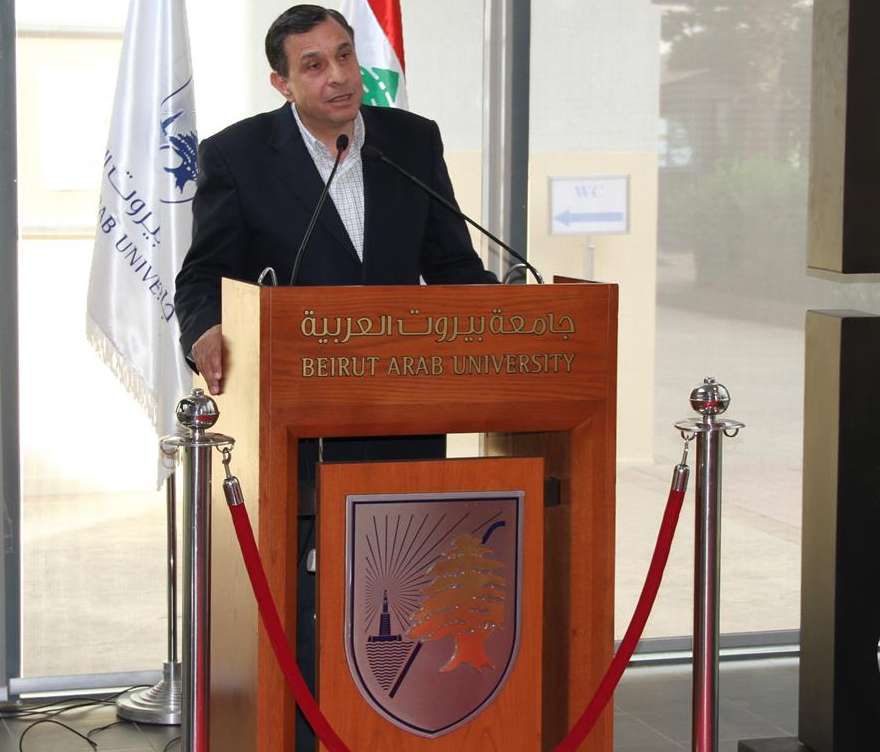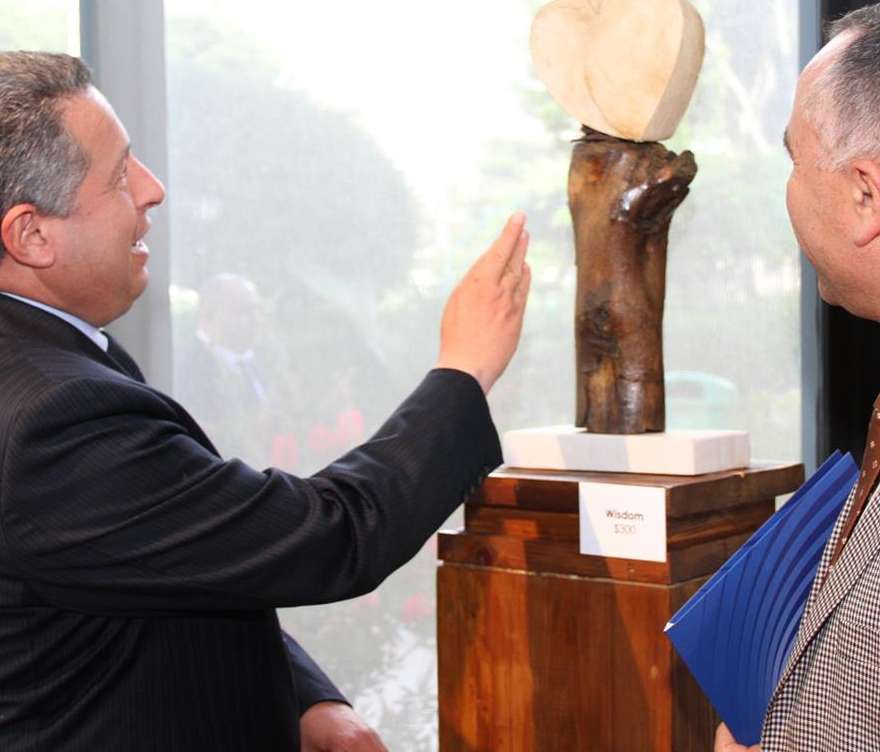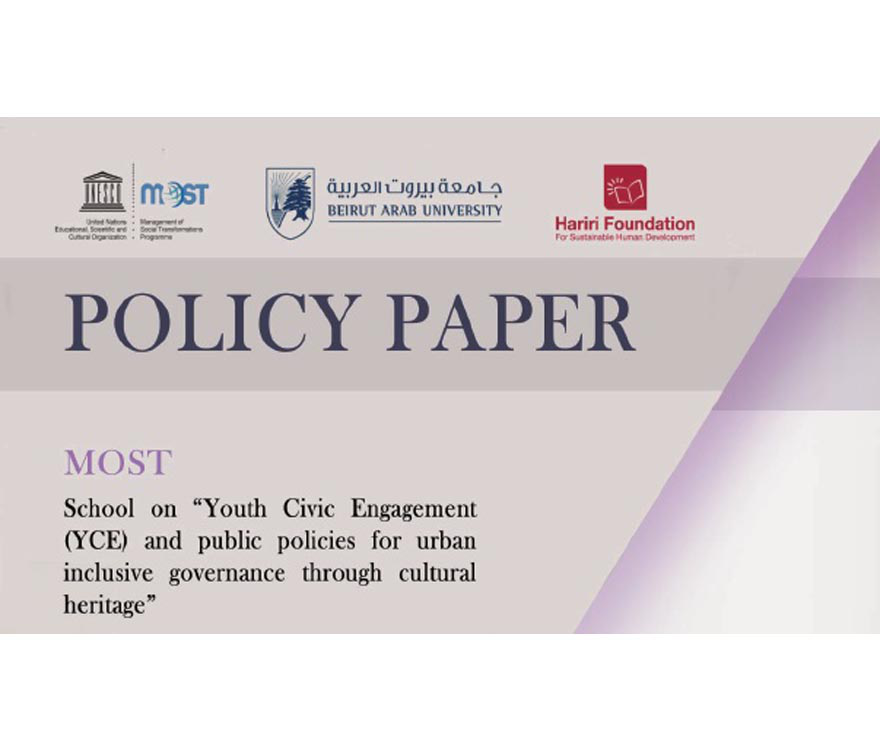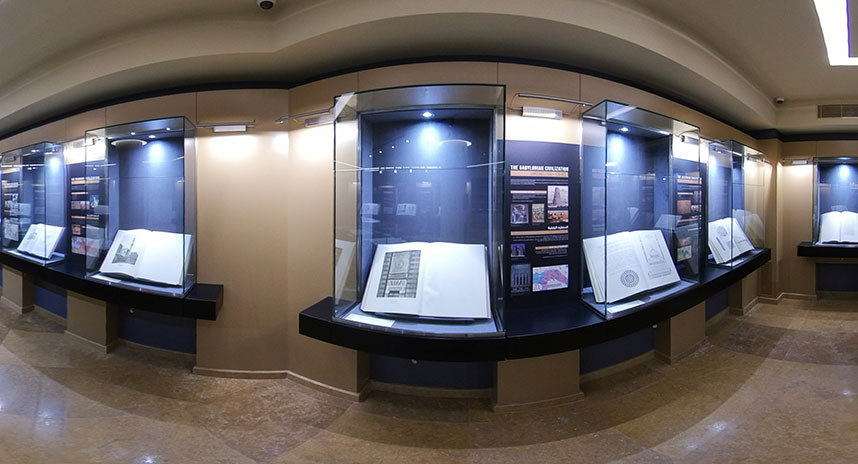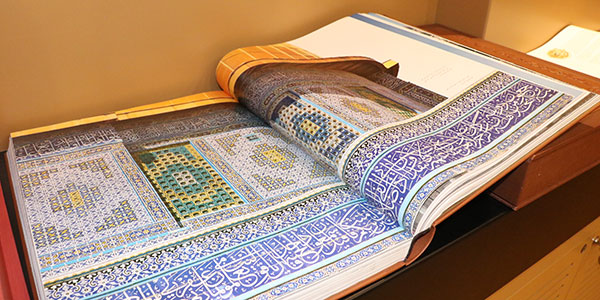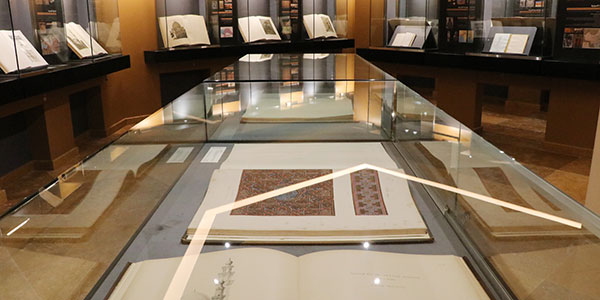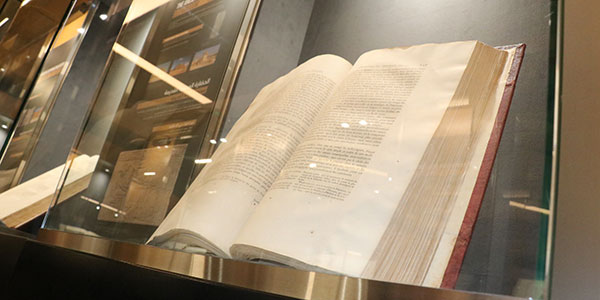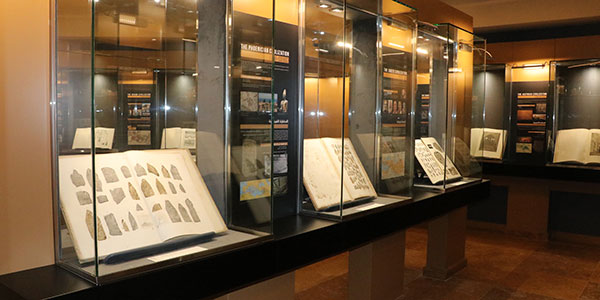Public access to museums, exhibition spaces / galleries and/or works of art and artifacts
The University frequently provides free access to the public for the events held and to visit and have a tour inside the museum, with this BAU has the purpose of generating a culture of care for the historical heritage in Lebanon.
General Public Events
Colours, together with their poetic glow, were embodied in artist Abdel Mawla Oweini’s paintings in his exhibition entitled "Spring Festival" hosted by Beirut Arab University in Beirut campus. The event was organized by the Public Relations Administration and was attended by BAU President Professor Amr Galal El-Adawi, BAU Secretary General Dr. Omar Houry, deans, directors, students and a crowd of interested audience.
The exhibition included 13 paintings in which the artist reviewed the communication between the near and the distant in a balanced flow of simplicity, spontaneity and return to the basics of shapes and their visual aesthetics. After the Lebanese and BAU Anthems, Ms. Rima Chehab opened the event saying, "Beirut Arab University has always been a pioneer in nurturing generations of educated youth and motivating them to develop their culture which, alone, grants them identity and excellence in the future."
President El Adawi praised the artist’s work as it touched our spirit with its varied colours and shapes. El Adawi stressed the fact that “the goal of the cultural season at BAU is to activate the artistic and cultural movement that helps develop arts among the students so they become a part of the cultural season that the university is keen to develop and expand year after year".
The Public Relations Administration at Beirut Arab University organised its “Success Story” event for the 6th year in a row with Hussein Fahmi, the Egyptian Actor and Artist, as a guest for this year. The event was attended by BAU President Professor Amr Galal El-Adawi, MPs Dr. Ammar Houri and Dr. Khaled Zahraman, Egyptian Ambassador H.E. Nazih Najjari, BAU family, students and a crowd of Lebanese and Arab Media Figures. As with every year, BAU concludes its cultural season with this event by honoring the success of distinguished personalities.
This year, Artist Hussein Fahmy engaged the audience with his humanitarian, personal and practical experiences after a long journey full of successful cinematic works, plays and series that were characterized by mimicking real-life and humanitarian issues of interest to all Arabs.
In the form of a TV Dialogue, the event was held at Jamal Abdel Nasser Hall- Beirut Campus and moderated by the Director of Public Relations Administration Ms. Zina Ariss.
In her opening speech, Ms. Ariss presented his most successful works, pointing out that he "understood his art from the director’s, actor’s and man’s point of view which rendered him a comprehensive artist who conveyed his thoughts as meaningful humanitarian messages.”She added the title of "the Spring of All Arts" to the tens of titles Fahmy has already had during his artistic career.
The Research Center for Environment and Development at Beirut Arab University, in cooperation with the Alumni Association (Bekaa Branch), organized, at the BAU Bekaa Site, an exhibition for academic advising by the Association of Universities in Lebanon.
The exhibition was visited by over 800 secondary-school students at the schools of the Middle and Western Bekaa areas. They were advised on how to select a field of specialization and were provided with the necessary information on available academic programs, their regulations and the enrolment procedures at these faculties.
The information was provided by representatives of the participating universities, including: AUB, St. Joseph University, LAU, Middle East University, Haigazian University, Sacre Coeur University, Notre Dame University, the Balamand University, Antonine Fathers University, the Islamic University, as well as BAU.
The Exhibition was sponsored by BLOM Shabeb, which is a program that provides orientation & scholarships to secondary school students pursuing university degree in Lebanon.
Beirut, with its blue sky, its Sea Pavement and the tales of its people, is the theme of the collection of vivid paintings that reflect the daily life of a lively city in the Daad Abi Saab’s “Tales and Heritage” exhibition hosted at Beirut Arab University on Thursday the 14th of March, 2012 at al Moltaqa Forum at Beirut Site. The paintings represent a profusion of colors that herald spring, and are rich in the aesthetics of Beirut, redolent with the nostalgia and heritage of the city overlooking the wide blue sea and horizon.
The paintings represent a Beirut City day on the Sea Pavement of Ein El Mreisseh, from sun-rise to sun-set, cast in a creative combination of expressionist, abstract and realist art. The paintings thus are a translation of the diversity that distinguishes Beirut, while focusing in depth on the human element.
The exhibition was inaugurated by Prof. Dr. Amr Galal El Adawi, President of BAU, Prof. Dr. Hanafy Holail, BAU Vice President for Academic Affairs, Mr. Issam Houri, BAU Secretary General, in addition to the Deans, staff-members, BAU directors and Mrs. Zina Ariss, Director of Public Relations Administration, as well as a large crowd of artists and art-lovers.
After the Lebanese and the BAU anthems were played, Prof. Dr. Amr El Adawi, President of BAU, gave a speech, praising the vivid colors in Daad Abi Saab’s paintings, indicating the importance of carefully reflecting on and enjoying these colors in the light of the current tense circumstances facing the society.
In her turn, Daad Abi Saab thanked the university for hosting the exhibition that aims at bringing the heritage and identity of Beirut into the limelight. These are seen as indicators of the demographic, urban and social diversity of Beirut in a way that translates the cosmopolitan diversity of the capital.
After the ribbon-cutting ceremony, the attendees visited the exhibition, viewing the paintings of Daad Abi Saab who explained the artistic aspects of each painting.
The exhibition is open daily from 9:00 am to 6:00 pm, until 21st March 2013 at El Moltaqa, Beirut Site.
Under the Patronage of the President of Beirut Arab University Prof. Amr Galal El Adawi, a photography exhibition for the Egyptian Architect Prof. Abdel Fattah Mousally was organized under the title of “The Nile and its Banks”.
The exhibition which was held on the 11th of April 2013 at the “Al Moltaqa Forum”- Beirut Site was attended in addition to BAU President, Dr. Hanafy Holail, BAU Vice President for Academic Affairs, Prof. Dr. Kamel Mahadin, Chief Commissioner of Aqaba Special Economic Zone Authority, Deans, staff-members, BAU directors and Mrs. Zina Ariss, Director of Public Relations Administration, as well as a large crowd of artists and art-lovers.
After the Lebanese and the BAU anthems were played Prof. El Adawi, gave a speech praising the photographs of Prof. Mousally, indicating the importance of highlighting on the genuine Egyptian urban character surrounding the Nile from various angels, by which it is revealed in the photographs exhibited.
In his turn, the Architect Prof. Mousally thanked Beirut Arab University for the generous host for the second time . He stated that the photographs shown, express and highlight on the urban nature and the cultural identity, touched by nostalgia and an adherence to this historical heritage of the Nile River.
After the ribbon-cutting ceremony, the attendees visited the exhibition, viewing the Mousally’s photographs whom in his turn explained the artistic aspects of each photo.
The exhibition is open until Thursday, 18th April 2013, from 9:00 am to 6:00 pm.
The bright colors of the Arab Spring have vanished, to be replaced by a scream and by an ache that has become a characteristic of the Arab citizen's concerns, dreams and anxieties in the last couple of years.
This scream was embodied in paintings, the colors of which seem to articulate the pain inscribed in the features, senses and faces of the Arabs.
The Artist Haytham El Masri has drawn 45 paintings inspired by the painful Arab reality, presenting them in an exhibition entitled "Scream".
The exhibition was hosted by Beirut Arab University on the 8th of May, 2013, and was attended by Prof. Dr. Amr Galal El Adawi, President of BAU, Mr. Issam Houry, BAU Secretary General, Captain Charbel Noaime, Head of the Artists' Order in the North, the deans and directors of the University, Mrs. Zina Ariss, Director of Public Relations Administration , in addition to, as well as a crowd of artists and interested people.
The paintings embodied the screams of the Arabs and the features of pain that accompany the various stages of anger, rebellion, breaking the shackles of injustice and abuse, in such a way as to demonstrate a diary of the revolutions, in colors that seem to bustle with the arising voices of the revolutionaries all around the Arab World.
After the Lebanese National Anthem and the BAU anthem were played, the President of BAU, Prof. Dr. Amr Galal El Adawi spoke, hailing the aesthetics of El Masri's paintings, announcing the closure of the cultural season that had been rich in activities and events that supplemented the educational process at the University.
Captain Charbel Noaime, then, introduced El Masri in a moving speech, describing him as an artist with a brush that draws screams through colors and movements. He stressed the fact that the meanings, aspects of resistance, and liberation expressed in the paintings will soon be realized.
In his speech, Haytham El Masri declared that he was better able to express himself through art and painting, rather than through speech, allowing the guests to read his thoughts in the exhibited paintings.
As the new Lebanese Traffic Law is received with much objection, Beirut Arab University observed it but with a different way throughout a creative and artistic space revealed in “The Last Dance” Sculptures’ Exhibition by Yahya Serbey.
The revenues of the exhibition will be dedicated to “Kun Hadi” Organization in an attempt to reduce the amount of Car Accidents on Lebanese Roads.
The event took place at Beirut campus on the 23rd of April 2015, and was attended by Prof. Dr. Amr Galal El Adawi, President of BAU, Ms. Lena Gibran, President of “Kun Hadi” Organization, the deans of faculties, Mr. Issam Houri, BAU Secretary General, in addition to a crowd of students and interested people.
The exhibition included 38 sculptures representing aspects of pain and grief caused by the loss of the young in Lebanon because of Car Accidents. Hania Chediak, whose death inspired Serbey in a number of images of loss aimed at sending messages that raise awareness.
The event opened with the Lebanese National Anthem and the BAU Anthem, followed by a word by Nadine Koleilat, who described Serbey’s sculptures in their transparency and honesty as reflecting the bitterness of loss.
Serbey explained in his word the depth of the wound caused by the death of this young lady, and thanked Beirut Arab University and its President for organizing this exhibition which aims at paying tribute to this young lady, while raising the awareness of young men and women in Lebanon.
This was followed by a speech by Ms. Lena Gibran, President of “Kun Hadi”, in which she called upon all artists to invest their energy and art in raising the awareness of youth in Lebanon to the dangers of road accidents.
She described the organization of such exhibitions as a better means to immortalize the victims of road accidents. Gibran also highlighted recent statistics, which state that over 700 persons die on the roads in Lebanon. She therefore welcomed the new traffic law.
Prof. Dr. Amr Galal El Adawi emphasized in his speech that this exhibition is different from all others, since it bears an artistic message and raises awareness of the dangers of road accidents. He expressed his happiness at the collaboration with “Kun Hadi”, which aims at putting an end to the “Last Dance” and replace it with life and continuity.
El Adawi also called upon university students and the Lebanese youth to uphold the new traffic law, since it greatly contributes to the reduction of Car Accidents and the subsequent pain and grief experienced by the families of the victims.
In the end, Serbey granted one of his sculptures to the University as an appreciation gesture to which will be placed on campus in Beirut, to remind BAU students of the hazards of accidents.
BAU the faculty of Architecture - Design and Built Environment in partnership with Unesco and Hariri Foundation is delighted to publish this policy brief series on “Youth Civic engagement and Public Policies for Urban Inclusive Governance through Cultural Heritage”.
It includes a broad range of topics produced by 6 BAU postgraduate students from the faculty of Architecture - Design and Built Environment and which was presented during MOST (Management of Social Transformations) workshop organized by Unesco, Hariri Foundation and BAU in March 2019.
BAU allows free admission to students and members of the local community daily, within the hours that are handled in the museum, the museum guides make the tour and show visitors everything that the museum contains.
Every year BAU opens the doors of the museum a few days for the local community with free access to contribute to the contribution of knowledge about ancient civilizations.
BAU allows the entry of non-profit institutions or foundations with the purpose of generating a culture of knowledge and recreation.
BAU allows scheduled visits by independent institutions that want to take a tour of the museum charging a fee for this. Contact is made by email, telephone and the University's web portal [5].
The museum includes around 200 rare books and manuscripts. This collection addresses civilizations that have existed in the world throughout history especially:
The Egyptian-Pharaonic Civilization, the Assyrian Civilization, the Phoenician Civilization, the Byzantine Civilization, the Persian Civilization, the Roman Civilization, the Babylonian Civilization, the Aramaic Civilization and the Arab and Islamic Civilization then the Ottoman Civilization.
This rare collection refers back to the eighth century AD, the eleventh century AD till the sixteenth, seventeenth, eighteenth and nineteenth centuries. Some of them are unique copies that are not available anywhere around the world.
Therefore, the most prominent collections that are available in the museum:
BAU Museum - The Egyptian Pharaonic Civilization
(It started around 3150 BC, and then developed over the next three millennia).
“Description of Egypt” collection that includes 24 volumes. It is one of the original copies in the world. It discusses the social, economic and agricultural life in Egypt in addition to the Egyptians temples and tombs. They are masterpieces of Egyptian inscriptions that were published in the times of Napoleon Bonaparte conquests between 1798 and 1799.
BAU Museum - The Phoenician Civilization
(It spread across the Mediterranean between 1500 BC and 300 BC).
It is a collection of rare books under the title “Corpus” which includes 24 volumes. It describes the Phoenician, Aramaic, Semitic and Hebrew inscriptions, in addition to highlighting the Phoenician personalities. It refers back to the eighteenth century.
BAU Museum - Persian Civilization
(It extended between 530 BC and 600 BC).
- A manuscript by Muhammad Kafafi that consists of poems in the Persian language by the poet "Jalal al-Din Rumi".
BAU Museum - The Arab and Islamic civilization
The Arab and Islamic civilization: (It extended from the middle of the eighth century till the fourteenth and fifteenth centuries AD).
A rare book in two volumes that deals with the "Alhambra" in Granada, which was built in 1238 It refers to the nobility of Islamic architecture and design, Islamic engravings, in addition to hundreds of drawings, written in Kufic script .
“The Muslim Architecture of Egypt” collection which refers back to the eighth and eleventh centuries that are the Fatimid, Mamluk and Ayyubid periods and the Islamic architecture in Egypt in addition to mosques and tombs in Aswan.
A rare book that talks about the "Sultan Hassan Mosque" in Cairo, which refers to the nobility and history of mosque architecture in Egypt. It was built in 1356 during the reign of the Mamluks.
BAU Museum - The Ottoman Civilization
(Islamic Empire that lasted nearly 800 years (1299 AD – 1923 AD).
"Beirut Velayati" consists of two volumes that refer to the geographical borders of the Ottoman Empire (Lebanon - Palestine - Syria) in the eighteenth, nineteenth and twentieth centuries. It also refers to monuments, religions and sects.
